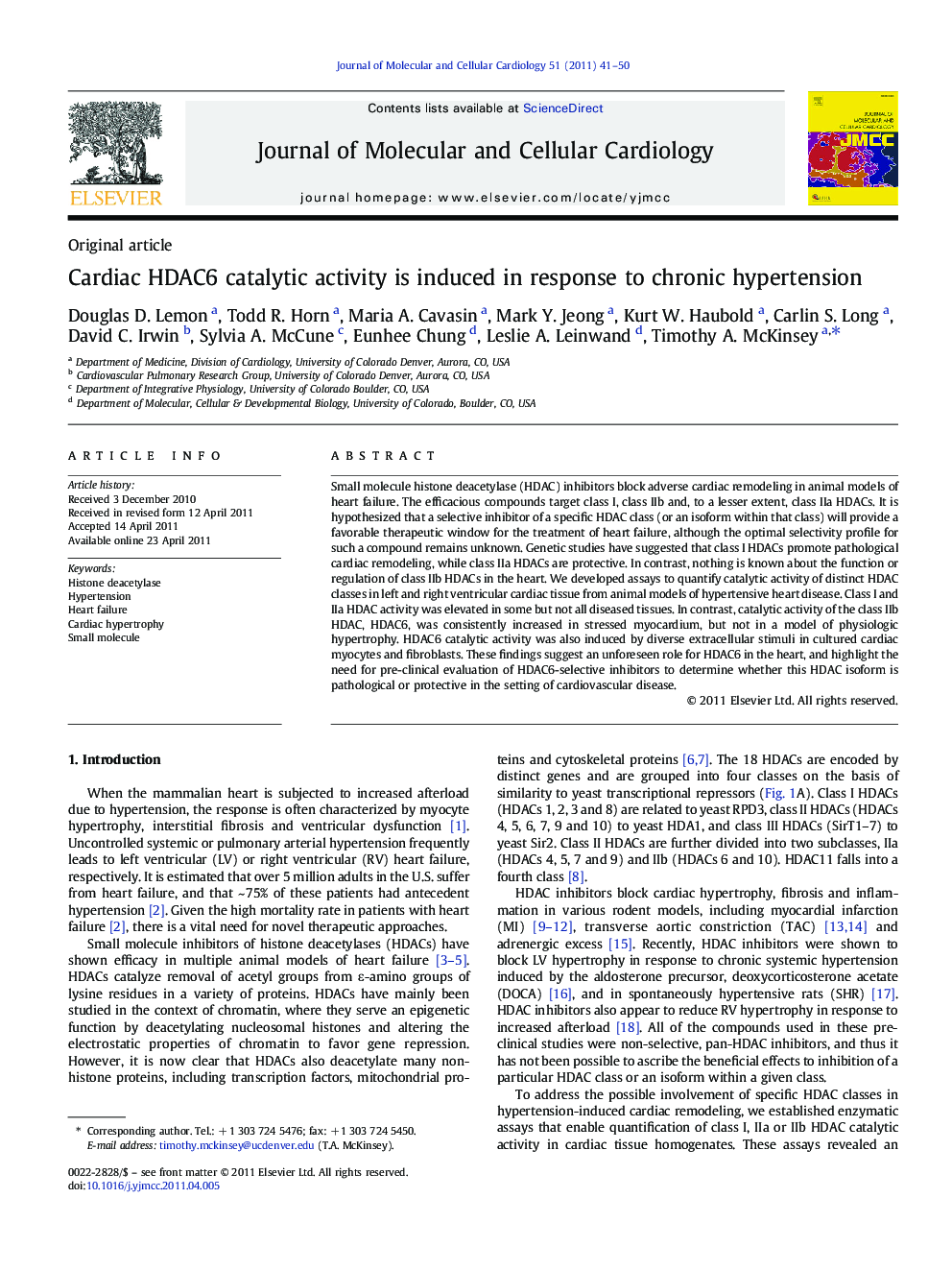| Article ID | Journal | Published Year | Pages | File Type |
|---|---|---|---|---|
| 2190772 | Journal of Molecular and Cellular Cardiology | 2011 | 10 Pages |
Small molecule histone deacetylase (HDAC) inhibitors block adverse cardiac remodeling in animal models of heart failure. The efficacious compounds target class I, class IIb and, to a lesser extent, class IIa HDACs. It is hypothesized that a selective inhibitor of a specific HDAC class (or an isoform within that class) will provide a favorable therapeutic window for the treatment of heart failure, although the optimal selectivity profile for such a compound remains unknown. Genetic studies have suggested that class I HDACs promote pathological cardiac remodeling, while class IIa HDACs are protective. In contrast, nothing is known about the function or regulation of class IIb HDACs in the heart. We developed assays to quantify catalytic activity of distinct HDAC classes in left and right ventricular cardiac tissue from animal models of hypertensive heart disease. Class I and IIa HDAC activity was elevated in some but not all diseased tissues. In contrast, catalytic activity of the class IIb HDAC, HDAC6, was consistently increased in stressed myocardium, but not in a model of physiologic hypertrophy. HDAC6 catalytic activity was also induced by diverse extracellular stimuli in cultured cardiac myocytes and fibroblasts. These findings suggest an unforeseen role for HDAC6 in the heart, and highlight the need for pre-clinical evaluation of HDAC6-selective inhibitors to determine whether this HDAC isoform is pathological or protective in the setting of cardiovascular disease.
Research highlights► Histone deacetylase inhibitors ► Potential for heart failure therapy ► HDAC catalytic activity ► Class IIb HDAC
